What Transmission Does My Car Have?
Have you ever been shopping for cars online and then filter your search by ‘manual transmission’ because all of the cool cars have them? If you haven’t, try it now. I’ll wait.
See?? Isn’t that awesome what you find? Now, sort by price from low to high and tell me you didn’t just try to justify buying another project car. While this seems like a tangent, my point is that cars have different transmissions.
Here are three different transmission types found in today’s vehicles along with how to identify the specific transmission model.
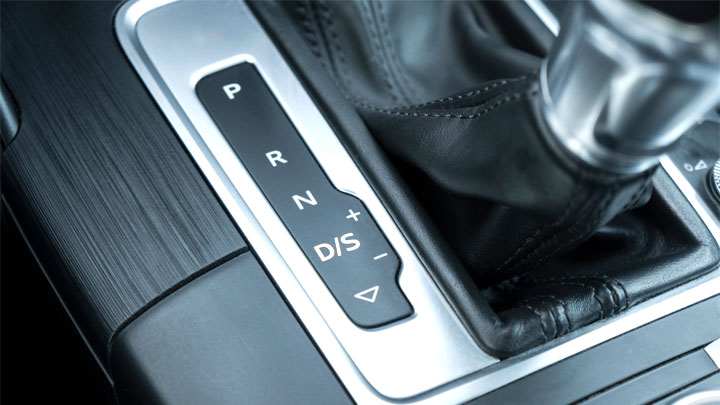
See Also: 20 Things EVERY Car Owner Should Know
Types of Car Transmissions
Manual Transmission
How It Works
A manual transmission is, like the name suggests, more of a hands-on approach to shifting gears. Remember when you had a bicycle and, if you stayed in the same gear all the time, you would have more trouble getting up hills?
Remember when you got up that hill finally, and then when you started to descend, you couldn’t spin your legs fast enough to get any more speed? That’s because you didn’t shift.
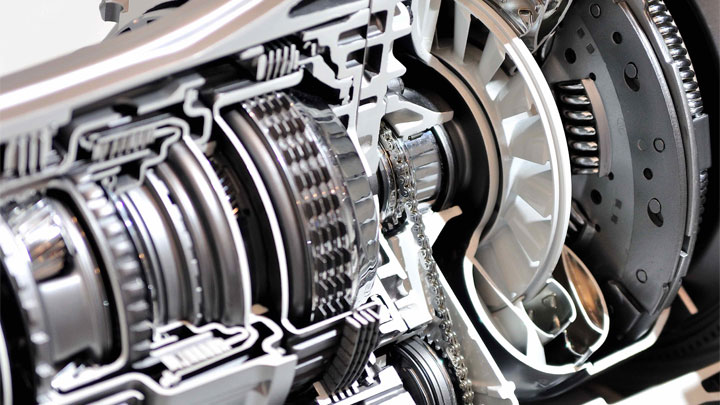
Shifting gears helps you control how much power you are putting through your drivetrain and, when your engine is your legs, you need to make sure your bike is in the right gear so you don’t overwork your legs.
The same concept applies to your car. In order to make your engine last longer, you need to shift through the gears to get the most efficient transfer of power. If you didn’t, it would be like accelerating from zero miles per hour in 6th gear all the time.
See Also: Manual Transmission Hard to Shift? (6 Common Causes)
How to Identify
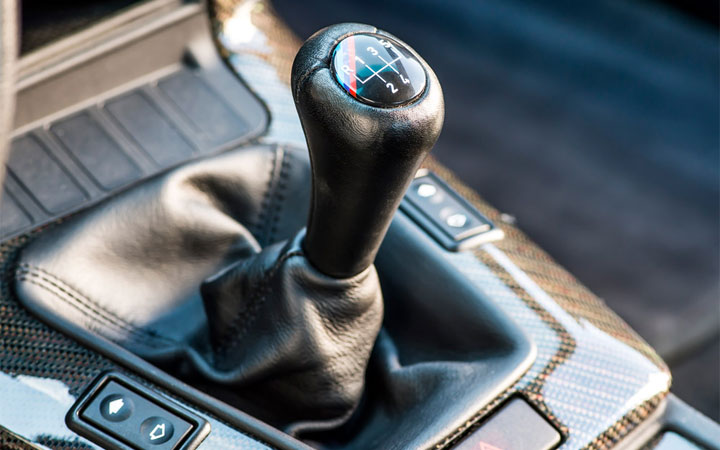
A good way to identify a manual transmission is just to look at it first. Does it have a picture on the top of the knob that looks like a birds-eye view of tron in black and white with numbers at the end of each line? If so, that’s probably a manual transmission.
Still can’t tell? Try grabbing the transmission and waggling it around a bit. The owner might have left it in the neutral position (not in a gear) so you’ll get a lot of play left to right, forward and backward. If it’s not moving at all, it’s either not a manual transmission or it’s still in gear.
Since we still might not be able to tell at this point, look on the left or right side of the transmission and check to see if there are letters and numbers like “P, R, N, D, 1, and 2”. If there are, then that’s what we call an “Automatic” transmission.
See Also: Semi-Automatic Transmission Overview
Automatic Transmission

How It Works
Just like “manual” signifies doing something with your hands, “automatic” where it applies to transmissions means that the car will basically shift itself. This is how 99% of cars these days shift. You get in the car, turn it on, put the transmission to “D” (for “Drive”), let off the brake, and you are on your way.
As you press the accelerator, the engine speed increases, spinning the transmission a bit faster. This will increase the oil pressure or trigger a sensor that will shift the transmission into a higher gear. This will lower the engine speed, allowing you to move down the road more efficiently as you won’t be using as much gas.
How to Identify
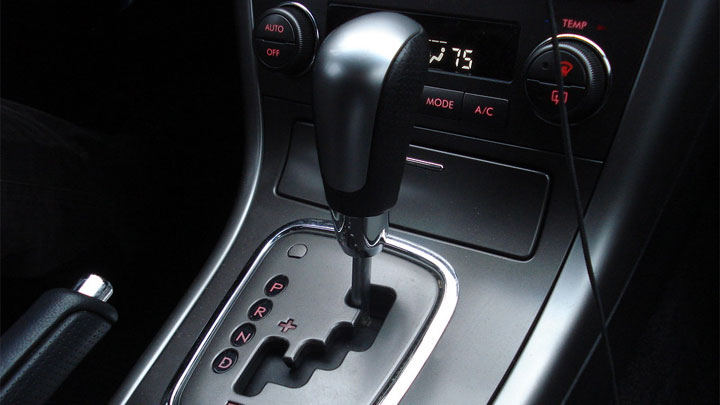
While this transmission still has a stick that you grab to move it into the “drive” gear, it won’t have nearly as much play and it won’t give you a series of numbers (1-5 or 6 normally) to choose from. The shift lever will either be on the steering wheel column or just to your side towards the middle of the car.
Reach and move the lever towards the “R” to get the car out of park and go to “Reverse”. This will allow the car to move backwards if you need to back out of a parking spot or make some space between you and an obstacle.
If you want to coast down a hill silently because you don’t want to wake up your parents, throw the transmission into the “N” (neutral) position. This way, you can kill the engine as you roll down that final hill to your driveway.
**Please note, we do NOT recommend killing the engine in your car as it makes it harder to steer as you don’t have power steering anymore!** (I’m just mentioning this in a theoretical sense)
“Drive” is pretty self-explanatory. In this position, your car will move about in the most efficient way possible. There will be a preset shifting point under 3000 RPM normally, and if you floor it, the car will downshift and accelerate as fast as possible.
Often, below the “D” position, there is a “2” which stands for second gear. You would shift into this gear when you are doing some mountain driving and you want to save your brakes on the downhill portion.
This will force the engine to not exceed the speed required for second gear, and since the momentum of the car is propelling you down hill, the engine will slow the car down. If you were to just lay on the brakes the whole way down, you will place premature wear on those pads, and this could even result in failure.
If you’re going down or up something extremely steep, you might just want to throw the transmission in “L” for low, or “1” for first gear. This will allow you to use all of the engine at the lowest gear option so you get the most wheel spin per input of throttle. If you want to do a burnout in an automatic transmission, you’ll need this feature if you’re going to get any sort of wheelspin.
Finally, many newer cars will have an automatic transmission with manual mode. This will allow you to manually select the gear you want to be in. Its helpful for the same downhill scenario where you would shift into a lower gear and allow the engine to prevent the car from gaining speed while going downhill (instead of forcing you to ride the brakes).
A manual mode also offers at least a bit more driver engagement/fun for those purists who may prefer going through the gears of a manual transmission.
CVT Transmission
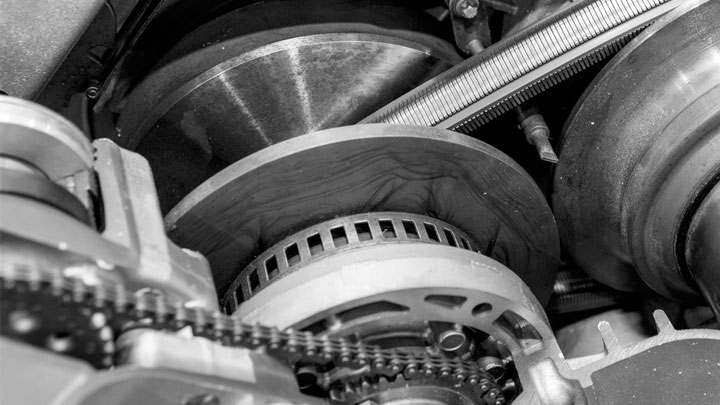
How It Works
Many cars that you can buy these days will be equipped with a “Continuously Variable Transmission”, or CVT. This is a form of automatic transmission, in that you don’t have to actively shift between gears with your hands, but the mechanism and feel are a little bit different.
Just like an automatic transmission, you just need to put it in “Drive” and go forward! The CVT will feel more smooth than a standard automatic, because you won’t feel it shift between one gear to the next. You might also find that the car won’t accelerate as quickly in general because it is more meant for efficiency, not for performance.
Under the skin, a CVT transmission uses a “rubber band” in order to maintain the proper gear ratio while you are driving along. This rubber band is always the same length, but it needs to go around both the input and output shafts in the transmission. The way the transmission keeps engine speeds low and efficient is by moving the input and output shafts back and forth.
Each shaft has a wide portion and a narrow portion that adjusts how quickly each shaft spins, but keeps them in proper relation to each other since there is a rubber band that doesn’t change its length.
Related: List of Cars With a CVT Transmission
How to Identify

CVTs are generally used in smaller cars where there doesn’t necessarily have to be a clear distinction between gears as you would need in a semi-truck, for example. With smaller cars, all forces are less severe than what you are dealing with in a large truck, so you can get away with a CVT.
Another great benefit of a CVT is that they are VERY efficient in that they are never causing the engine to use more power than it needs. Many manufacturers also swear by their CVTs, claiming that you don’t really need to service them in the first 100,000 miles!
How to Identify the Transmission Model
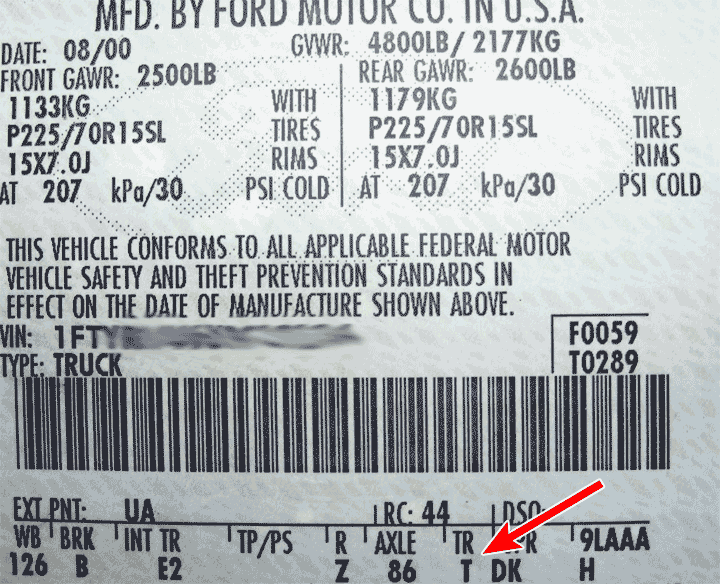
#1 – Check the Driver’s Door Card
Open the driver-side door and look down on the inside door frame closest to the rear of the car. This is where the vehicle-specific information card will be, and you’ll be able to see what transmission model your car is equipped with, along with the engine specifications, car model number, and other information.
#2 – Check the Owner’s Manual
This one’s pretty self-explanatory, but you should dive into the glovebox and get out that owner’s manual and search the index for “Transmission”. This will give you a page number that you can use to get information about your transmission.
Not only will this page tell you what transmission model you have, but it will also give you helpful service intervals, recommended fluid types, and other helpful function info that could help you when the going gets tough.
See Also: Chilton vs Haynes (Who Makes the Better Repair Manual?)
#3 – Check in the the engine bay
Most cars will have a description of what’s going on transmission-wise under the hood. It will tell you whether you have a CVT, automatic, or manual transmission.
But it may also tell you what type of engine oil to use, coolant temperature recommendations, warnings, transmission fluid recommendations, and how long it’s been since you changed your timing belt or timing chain.
#4 – Oil pan
If the above easier solutions don’t work, or that information is missing for some reason, you might want to look into the business you are buying it from or the previous owner. There could be some sketchy nonsense going on, so if you are buying it, walk away.
If you already own the car and you can’t make the above solutions work, crawl under the car and check the transmission oil pan. It will have a small card on the side as well which will give you the exact make and model of your good old “Gear Shifter” (I’m tired of writing “transmission”, OK?)
#5 – VIN
Finally, and the above solutions should have worked, but if for some reason they didn’t, go around to the front, driver’s side of your car and look at the base of the windshield. You should find a 17 character alpha-numeric string that we call a Vehicle Identification Number, or VIN.
Use this code to look up information on your vehicle, including the type of transmission you have, the make and model of your car, as well as if your car has any recalls or problems associated with it.
You can contact your car manufacturer to get some details about your VIN or use CarVertical or similar service to get a complete details about the vehicle and its history.
Closing thoughts, Maintenance
Your transmission is very important to the function of your vehicle. Maybe not as important as your tires or engine, but definitely close to the top! Shifting gears smoothly and reliably is the difference between you getting to your destination, and having your car peter out and not make it over the top of that hill.
Making sure your transmission fluid is clear is what determines how long your transmission will last. If the color of transmission fluid is super cloudy, you’ll need to replace it with new fluid because the dark particles are just metal flakes from your clutch or the gears rubbing together. Just check it often, and you’ll be fine.
So there you have it, everything I think you should know about transmissions at a base level, and even some more if you made it to the end.
- How Long Does Paint Protection Film Really Last? - Apr 23, 2024
- How to Reduce Wind Noise in Your Car (Locate the Source) - Nov 22, 2023
- How Long Can You Drive on a Spare Tire? (and How Fast Can You Go?) - Sep 13, 2023
